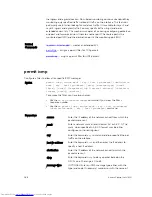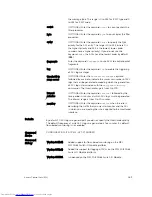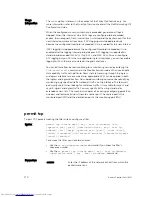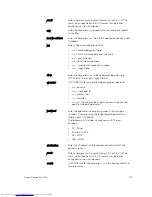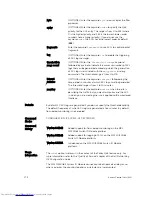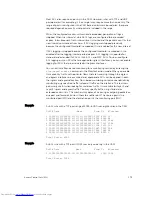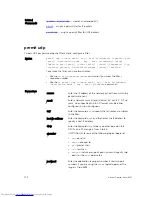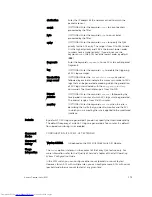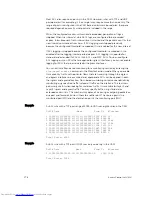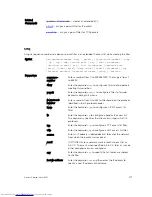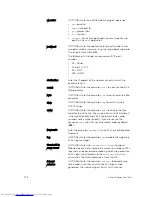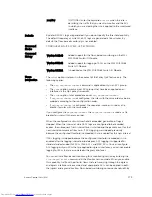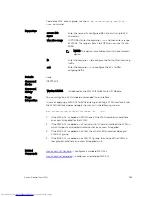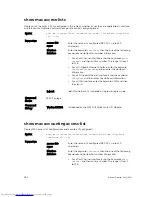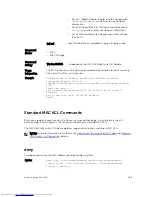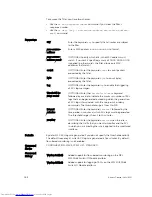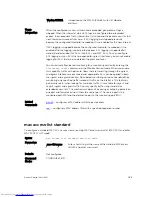
Usage
Information
The
order
option is relevant in the context of the Policy QoS feature only. For
more information, refer to the Quality of Service chapter of the
Dell Networking OS
Configuration Guide
.
When the configured maximum threshold is exceeded, generation of logs is
stopped. When the interval at which ACL logs are configured to be recorded
expires, the subsequent, fresh interval timer is started and the packet count for that
new interval commences from zero. If ACL logging was stopped previously
because the configured threshold is exceeded, it is re-enabled for this new interval.
If ACL logging is stopped because the configured threshold is exceeded, it is re-
enabled after the logging interval period elapses. ACL logging is supported for
standard and extended IPv4 ACLs, IPv6 ACLs, and MAC ACLs. You can configure
ACL logging only on ACLs that are applied to ingress interfaces; you cannot enable
logging for ACLs that are associated with egress interfaces.
You can activate flow-based monitoring for a monitoring session by entering the
flow-based enable
command in the Monitor Session mode. When you enable
this capability, traffic with particular flows that are traversing through the ingress
and egress interfaces are examined and, appropriate ACLs can be applied in both
the ingress and egress direction. Flow-based monitoring conserves bandwidth by
monitoring only specified traffic instead all traffic on the interface. This feature is
particularly useful when looking for malicious traffic. It is available for Layer 2 and
Layer 3 ingress and egress traffic. You may specify traffic using standard or
extended access-lists. This mechanism copies all incoming or outgoing packets on
one port and forwards (mirrors) them to another port. The source port is the
monitored port (MD) and the destination port is the monitoring port (MG).
permit tcp
To pass TCP packets meeting the filter criteria, configure a filter.
Syntax
permit tcp {
source mask
| any | host
ip-address
} [
bit
]
[
operator port
[
port
]] {
destination mask
| any | host
ip-
address
} [
bit
] [dscp] [
operator port
[
port
]] [count [byte]]
[order] [fragments][log [interval
minutes
] [threshold-in-msgs
[
count
]] [monitor]
To remove this filter, you have two choices:
• Use the
no seq
sequence-number
command if you know the filter’s
sequence number.
• Use the
no permit tcp {
source mask
| any | host
ip-address
}
{
destination mask
| any | host
ip-address
}
command.
Parameters
source
Enter the IP address of the network or host from which the
packets were sent.
170
Access Control Lists (ACL)













